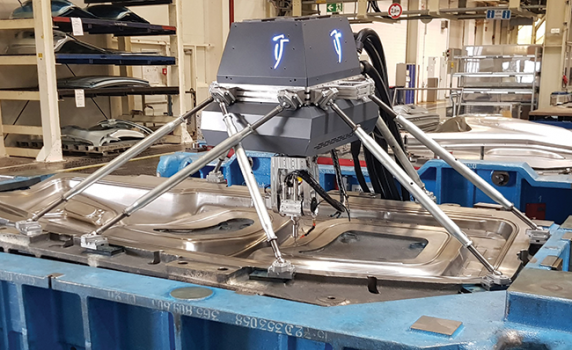Mobile, Hybrid Machining for Tool + Die Industry

Description
Up until now, tool and die processing required large components to be transported to the respective machine. The start-up company Picum MT is presenting its system for the mobile machining of workpieces at this year's EMO Hannover. A spin-off of the Institute for Manufacturing Technology and Machine Tools (IFW) at Leibniz University Hannover, Picum MT developed the lightweight and compact Picum system that is designed to handle all necessary work, including machining and build-up welding directly on the component itself. Picum is especially useful for revisions, tool adjustments or repairs. In line with the concept "machine to the workpiece" instead of "workpiece to the machine," the use of large conventional machine tools and time-consuming transport is no longer required.
All key machining processes with one machine
The extremely compact and lightweight Picum system is based on conventional 5-axis serial kinematics. The machine is mounted on the workpiece and positioned over the machining point. Before processing starts, the system automatically detects the exact position and orientation of the workpiece in relation to the machine and adapts an NC code to the current situation. An innovative quick-change system makes it easy to switch between machining processes, for example from build-up welding to milling.
The axis system is attached using an adaptive framework. This ensures maximum rigidity at low weight. Various compensation methods enable Picum to achieve a level of precisions that meets the highest toolmaking standards. The system can be easily repositioned for machining extremely large surfaces. The software recognizes the new situation and automatically transforms the NC code.
The compact Picum system can be transported to the deployment site in a small van, trailer, or airfreight container. Unlike transporting a very large tool or die, users benefit from lower transport costs and save a significant amount of time. Picum MT is marketing a system that combines the accuracy of a machine tool with the flexibility of a robot and the mobility of a drilling machine. Typical applications can be found in industries that manufacture large parts, including aerospace, automotive, energy technology, mechanical and plant engineering, shipbuilding, and process engineering.
